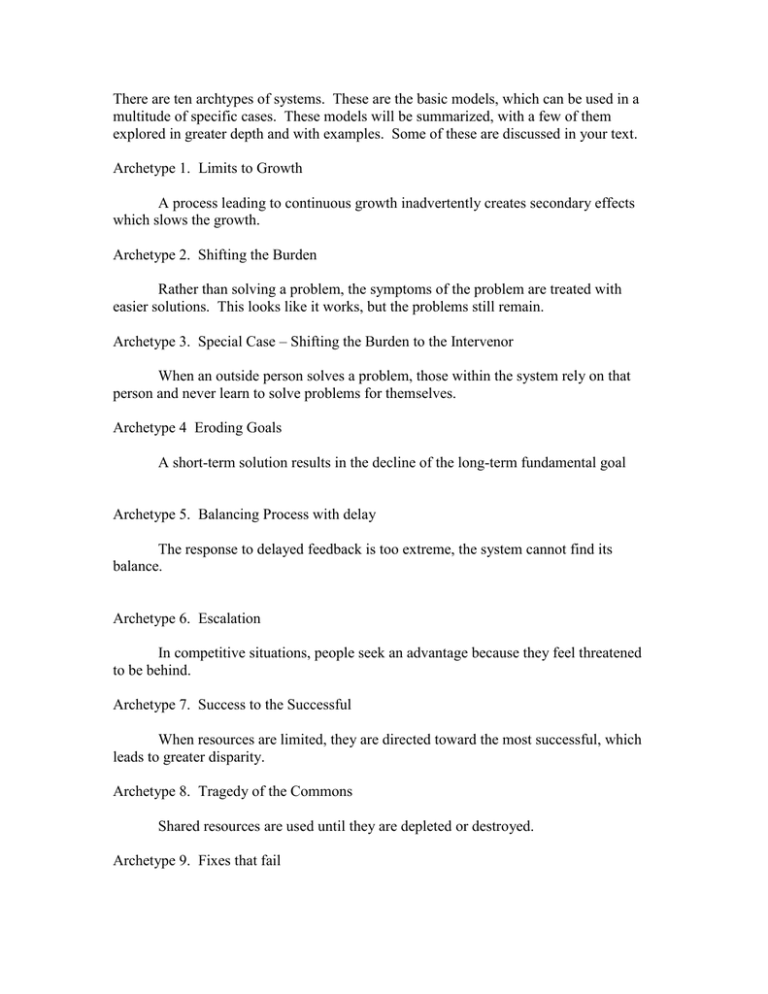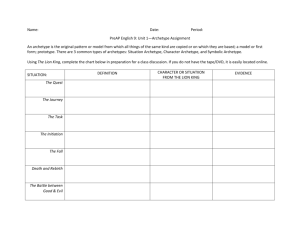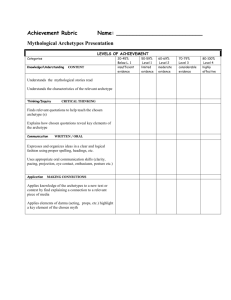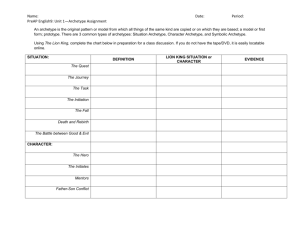There are ten archtypes of systems. These are the... multitude of specific cases. These models will be summarized,...
advertisement

There are ten archtypes of systems. These are the basic models, which can be used in a multitude of specific cases. These models will be summarized, with a few of them explored in greater depth and with examples. Some of these are discussed in your text. Archetype 1. Limits to Growth A process leading to continuous growth inadvertently creates secondary effects which slows the growth. Archetype 2. Shifting the Burden Rather than solving a problem, the symptoms of the problem are treated with easier solutions. This looks like it works, but the problems still remain. Archetype 3. Special Case – Shifting the Burden to the Intervenor When an outside person solves a problem, those within the system rely on that person and never learn to solve problems for themselves. Archetype 4 Eroding Goals A short-term solution results in the decline of the long-term fundamental goal Archetype 5. Balancing Process with delay The response to delayed feedback is too extreme, the system cannot find its balance. Archetype 6. Escalation In competitive situations, people seek an advantage because they feel threatened to be behind. Archetype 7. Success to the Successful When resources are limited, they are directed toward the most successful, which leads to greater disparity. Archetype 8. Tragedy of the Commons Shared resources are used until they are depleted or destroyed. Archetype 9. Fixes that fail A fix that worked in the short time must be continually reused because of unintended consequences for the initial uses. Archetype 10 Growth and Underinvestment Limits to Growth can be delay with sufficient investment, but hesitance to invest soon enough may lead to slowing of growth justifying the delay in investing. We will focus on two of three of these. Limits to growth Shifting the burden Tragedy of the Commons Limits to Growth Definition: A reinforcing (amplifying) process is set in motion to produce a desired result. It creates a spiral of success but also creates inadvertent secondary effects (manifested in a balancing process), which eventually slow down the success. Management Principle: Don’t push growth, remove the factors limiting growth. Where is it found? Organizations grow for a while then stop growing Working groups get better for a while, but stop getting better Individuals improve themselves for a period, then plateau Crash diet to lose weight but motivation wanes. A farmer increases yield with fertilizer, but crop is larger than local rainfall can support. The structure Limiting Condition Slowing Action Growing Action Condition Example 1. A high tech company grows rapidly because of its ability to introduce new products. As new products grow, revenues grow, the R&D bedget grows and the engineering and research staff grows. Technical staff becomes complex and difficult to manage. Management burden falls on senior engineers who have less time for engineering. Longer product development time slows introduction of new products. Read limit to growth structures by starting with the reinforcing loop. Size of Engineering Staff Management Complexity R & D Budget Revenue R New Products B Delay Management Burden to Senior Engineers Product Development Time Pattern of Behavior After rapid, initial growth, there is a slowing of growth as the balancing loop becomes more dominant. This can lead to morale decline and a reversing of the reinforcing loop: less revenue, less R&D, fewer products, less revenue … How to achieve leverage Typical response is to push harder. If you can’t break your bad habit, become more diligent in monitoring your own behavior. If your relationship is having problems, spend more time together If your staff are unhappy, keep promoting junior staff to make them happy. If the flow of new products is slowing down, start more new products Because these worked in the beginning, it seems reasonable they would continue to work. Unfortunately, the harder you push on the familiar levers, the more strongly the balancing process resists and the more futile your efforts become. A better way – leverage is in the balancing loop, not the reinforcing loop. Change the limiting behavior. In the relationship problem, give up on the idea of a perfect partner which is a goal that limits the continued improvement of any relationship. If the staff are unhappy, change the paradigm from promotions to acknowledging work well done, not a person’s place in the hierarchy. Distribute challenging work assignments equitably and not to the elite of the company. In the technology company – solutions include decentralizing, bringing in professionals skilled in managing creative engineers (which is not easy) and some by management development for engineers who want to manage. When one limit to growth is weakened, growth can continue until the next limit is felt. All growth eventually stops Activity: Create your own Limits to Growth Story and show on the board then look for the leverage and state your alternative to working harder. Do this in partnership that is different than your groups (rotate everyone one space).






